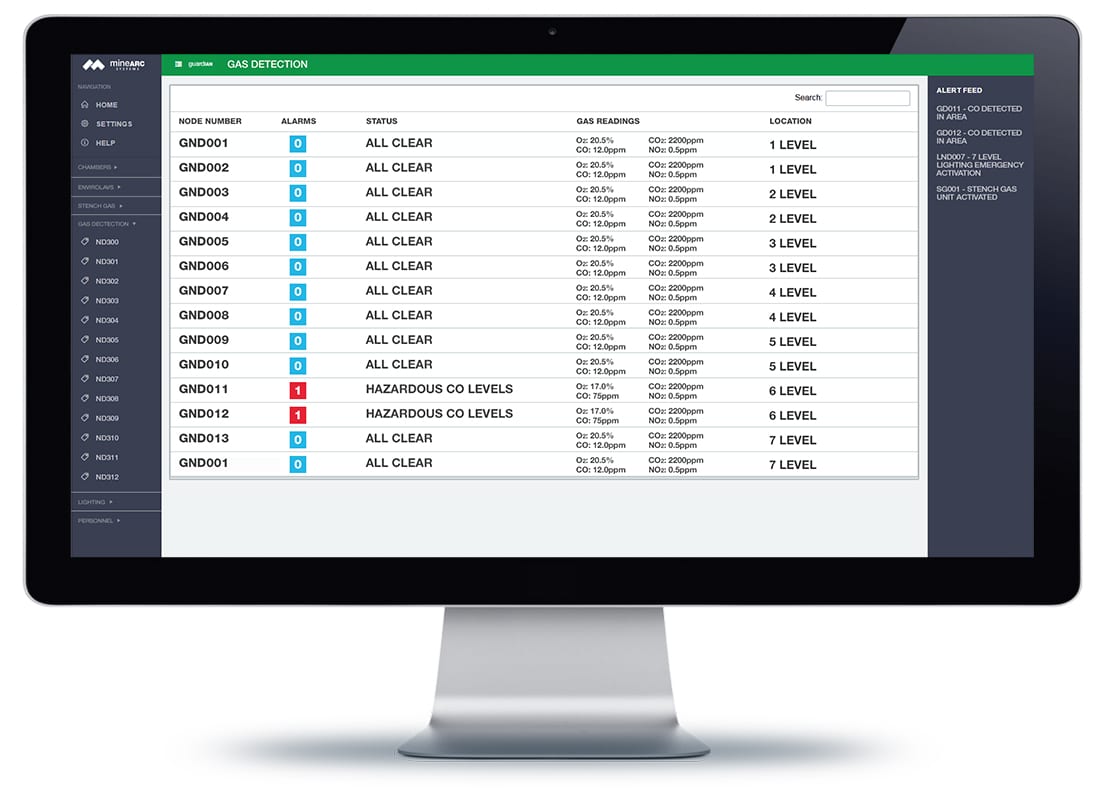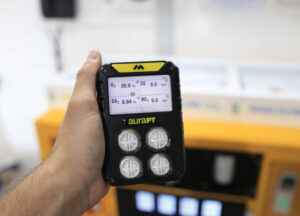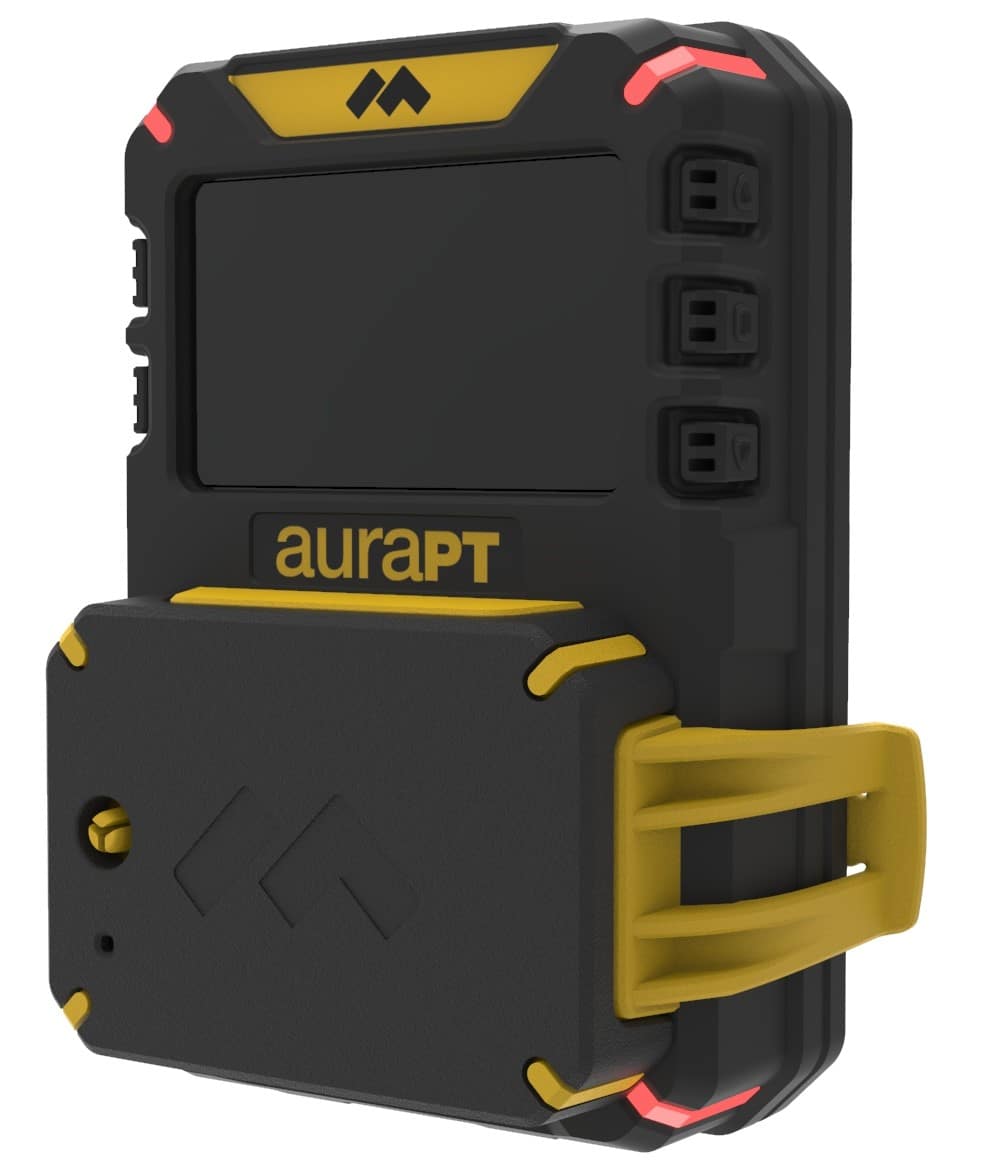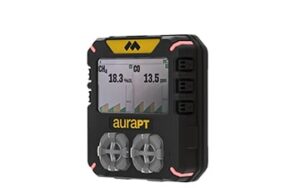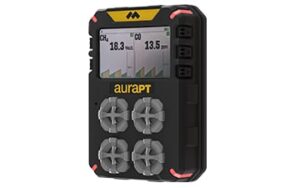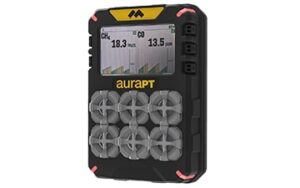Handheld Gas Detection
Handheld gas detection with MineARC’s Aura-PT has been designed to provide underground personnel with the ability to continuously monitor up to six gases within their immediate surroundings. When used in conjunction with the GuardIAN Intelligence Network, Aura-PT automatically communicates dangerous gas levels back to the GuardIAN Server via adjacent GuardIAN Nodes.
The Aura-PT handheld gas detector can also be used as a redundancy during re-entry, allowing personnel to easily and accurately monitor gas levels as they are driving back down the decline.
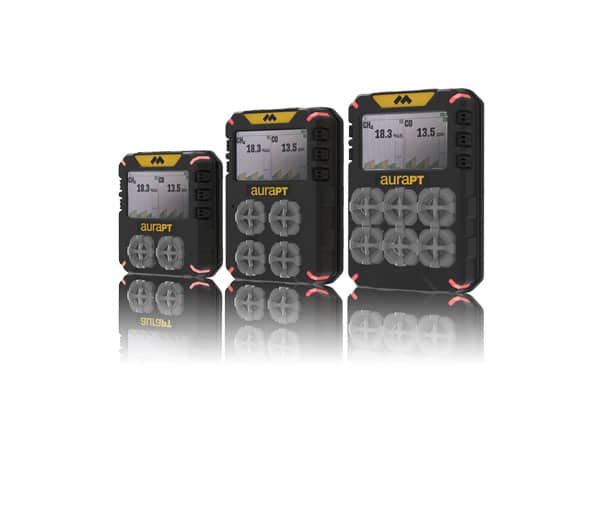
- Available in 2- and 4- gas models (6-gas coming soon)
- Visual and vibration alerts
- Connects to the GuardIAN Network
- Clear, digital interface
- Select your gas sensors
- Inclusive of temperature monitoring
- Reduced risk of human error
| Gas | Sensor Life |
| Oxygen (O2) | 1 year |
| Carbon Monoxide (CO) | 1 year |
| Carbon Dioxide (CO2) | 3 years |
| Hydrogen Sulfide (H2S) | 1 year |
| Ammonia (NH2) | 1 year |
| Chlorine (Cl) | 1 year |
| Methane (CH4) | 3 years |
| Nitric Oxide (NO) | 1 year |
| Nitrogen Dioxide (NO2) | 1 year |
| Sulfer Dioxide (SO2) | 1 year |
In contrast to most other DGM’s on the market, Aura-PT sensors require a service and calibration just once every 12 months.
Calibration is conducted simply by clipping the Aura-PT Calibration Shroud to the face of the unit, and connecting the gas tube. Each sensor is consequently flooded with calibration gas of known composition, and the sensor reading is adjusted to match the target accordingly.
When the sensors reach the end of their service life, they are replaced simply by removing the back of the Aura-PT, pulling out the old sensor board, and pushing in the new one. MineARC encourage a bump test following any sensor change-over to ensure the unit is operating correctly. If following a bump test, readings are out of the ordinary, calibration is advised.
Calibration can be conducted by a MineARC technician, or by an individual on-site, with the assistance of the Aura-PT manual and calibration kit.
Q: WHERE IS AURA-PT MANUFACTURED?
Aura-PT is designed and constructed by MineARC Systems in Perth, Western Australia. The system utilises quality components from companies around the world.
Q: WHAT IS THE DIFFERENCE BETWEEN A BUMP TEST AND CALIBRATION?
The main difference is that a bump test determines whether the Aura-PT can detect if a possibly hazardous gas is present, while calibration checks that equipment is accurate.
Bump Test: Checks whether sensors and alarms are working as intended, and failure might indicate that a blockage is present. In sum, bump testing assesses function, not accuracy.
Calibration Check: Calibration checks start by “zeroing” the Aura-PT and testing that alarms go off after applying a high enough concentration of test gas. The resulting sensor reading should match the concentration listed on the test gas container. The device is accurate within an acceptable range of ±10-20% of the test gas concentration applied.
Full Calibration: The adjustment of the sensor’s response to match the desired value compared to a known traceable concentration of test gas. This adjustment accounts for naturally occurring drifting and other environmental factors. Specially trained, qualified personnel are the only people permitted to perform full calibrations.
Q: WHAT IS THE DIFFERENCE BETWEEN A BUMP TEST AND CALIBRATION?
The sensor life remains the same, regardless of if the unit is left on or off.
